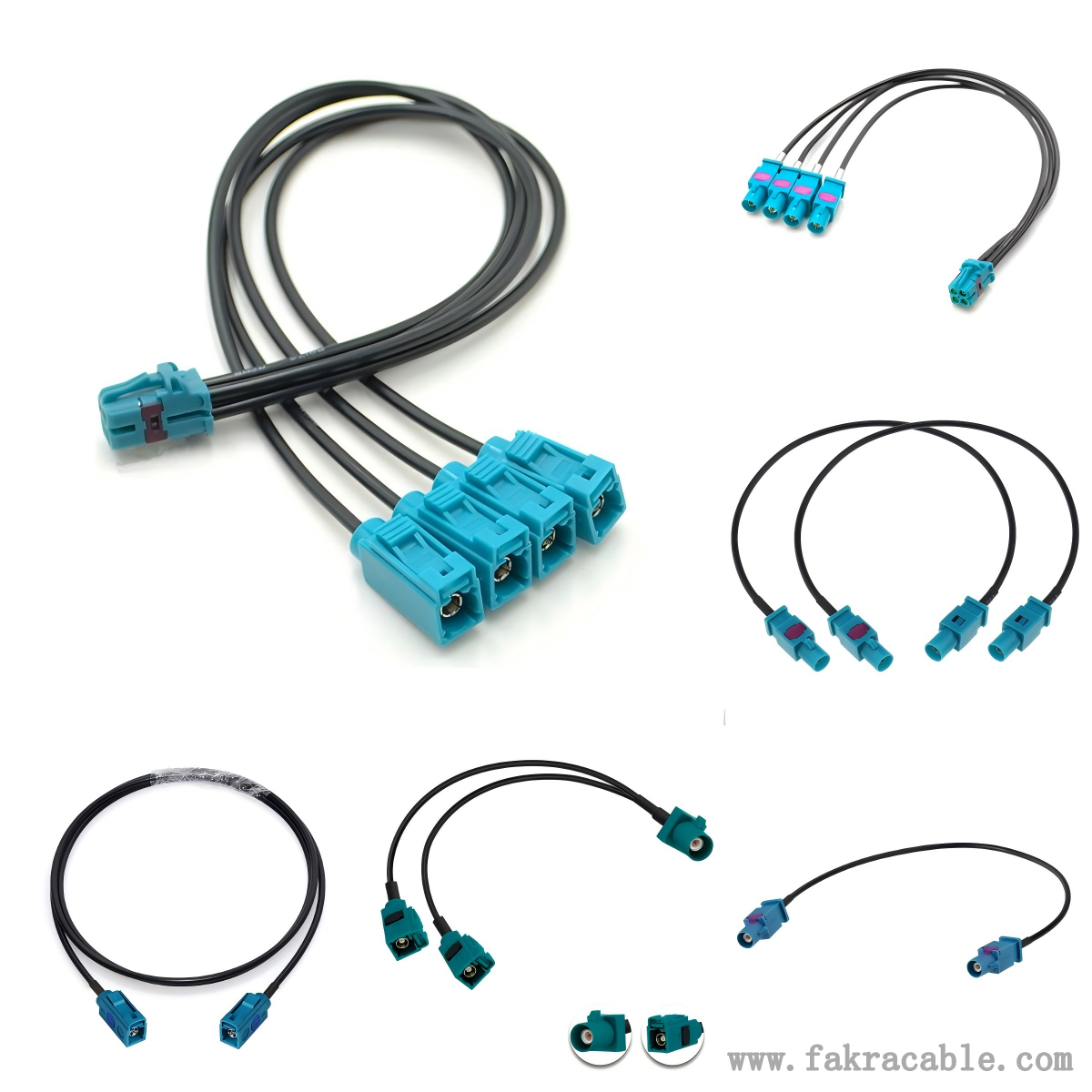What are the parameters for regularly testing Mini Fakra cables?
When regularly testing Mini Fakra cables, the main parameters involved are electrical performance, physical characteristics, etc. The following are specific instructions:
Electrical performance parameters
Conductivity: Use the resistance range of a multimeter to measure the resistance values of each core wire of the cable and check for any open or short circuits in the core wires. Under normal circumstances, the resistance of the core wire should be within the specified range. If the resistance value is infinite, it indicates the presence of an open circuit; If the resistance value is zero or far below the normal range, there may be a short circuit.

Insulation resistance: Measure the insulation resistance between cable cores and between cores and shielding layers using an insulation resistance tester. Generally, it is required that the insulation resistance value is not lower than a certain standard to ensure good insulation performance of the cable, prevent leakage and signal interference.
Characteristic impedance: Using professional equipment such as network analyzers to measure the characteristic impedance of cables.
Signal transmission loss: By using equipment such as signal generators and power meters, the power change of signals transmitted over a certain distance in cables is measured to calculate the signal transmission loss.
Crosstalk: For multi-core Mini Fakra cables, it is necessary to test the crosstalk between the core wires. By injecting a signal into one core wire and measuring the strength of the induced signal on other core wires, the degree of crosstalk can be evaluated. The crosstalk level should be below the specified limit to avoid mutual interference between different signals.
Physical characteristic parameters
Cable length: Use a tape measure or professional length measuring tool to regularly measure the length of the cable and check for any length changes caused by tension, shrinkage, or other reasons.
Cable outer diameter: Use measuring tools such as calipers to measure the outer diameter of the cable and observe for any changes in outer diameter caused by compression, aging, or other reasons.
Environmental adaptability parameters
Temperature characteristics: Measure the electrical performance parameters of cables, such as resistance and characteristic impedance, at different ambient temperatures to evaluate the stability of cable performance under extreme conditions such as high and low temperatures.
Humidity characteristics: Place the cable in different humidity environments, measure its insulation resistance and other parameters, and check the moisture resistance of the cable.
Contact: Mandy He
Phone: 15170973126
E-mail: obdwire@126.com
Whatsapp:
Add: 2nd Floor, Building 14, Aviation Science and Technology Innovation Area A, Nanchang Gaoxin Zone, Nanchang, China
We chat
